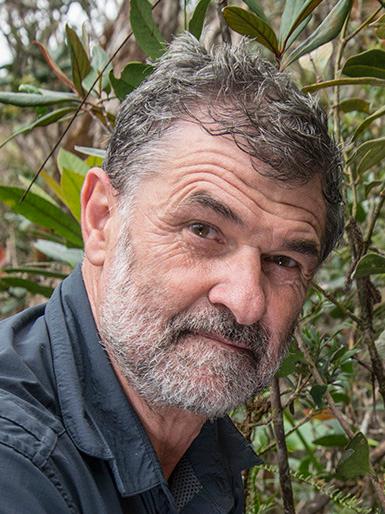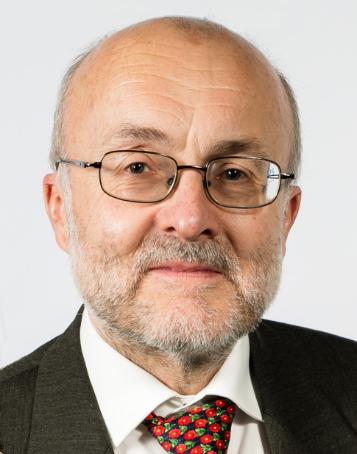
4 minute read
‘GOOD PICTURE’ AUTUMN SEMINARS
The Imaging Science group began its series of annual ‘Good Picture’ Symposia in December 2003 and has held 17 meetings up to 2019 at the University of Westminster on Regent Street with the aim of providing imaging practitioners, keen amateurs and students with insights into digital imaging and providing some tools and guidelines for assessing cameras and output. These lectures and discussions have showcased the technical diversity of imaging in a way that is accessible and useful to most people. The 120+ presentations over the years have covered a very broad field of subjects but all have had a major imaging component that would be of interest to our core audience. The speakers have come from universities, hospitals, industry and especially the RPS itself with many talks from Digital Imaging and Imaging Science group members.
With the advent of the coronavirus pandemic in the spring of 2020 and all the attendant uncertainty it was decided to cancel the Good Picture meetings in 2020 and 2021. Imaging Science group intends to start its meetings again in 2022 which it hopes will be as well attended as its pre-COVID events. In the meantime, the Imaging Science group has organised a series of three free, online, mini-Symposia over this autumn with updated talks from the last few years’ Good Picture meetings.
HOW TO BOOK
For each mini-Symposium, there will be two talks with time to take questions between and after the talks, all over a period of two hours. Access to the "Waiting Room" for each Zoom meeting will be available from 7.45pm and the session will begin at 8.00pm. Here are the links where you can register for each:
Imaging Outside of the Visible bit.ly/ISGSymposium1 Symposium 1 - Wednesday 22nd September, 8-10 pm
High-Tech and Low-Tech Imaging Technologies: Pinholes and AI bit.ly/ISGSymposium2 Symposium 2 - Wednesday 20th October, 8-10 pm
All About Colour – Gamuts & the Colour Response of Cameras bit.ly/ISGSymposium3 Symposium 3 - Wednesday 24th November, 8-10 pm
Imaging Outside of the Visible
Symposium 1 - Wednesday 22nd September, 8-10 pm bit.ly/ISGSymposium1

Photograph by Adrian Davies ARPS
The first of these free mini e-symposia features two lectures by experts in imaging using light of wavelengths outside of the visible.

Dr Jonathan Crowther (JMC Scientific Consulting Ltd.)
Imaging the Skin – UV, Visible and IR
Photographic imaging of the skin is used across a wide range of research industries, from cosmetics through to pharmaceuticals and forensics. Moving away from straight visible light photography, and using techniques such as cross polarization, and UV induced fluorescence, or even photographing in different parts of the electromagnetic spectrum such as Ultraviolet and Infrared, can provide information otherwise impossible to image. Imaging of the skin using conventional photography and these alternate techniques will be discussed and reviewed, along with some considerations when approaching this type of work.

Adrian Davies MSc ARPS (Freelance Photographer) Digital Photography of Plants Using Ultraviolet Reflected and Fluorescence Techniques
The presentation will highlight the issues involved with the digital photography of plants using ultraviolet radiation, both reflected and fluorescence. The results are starting to reveal new insights into the world of plants and their flowers.
High-Tech and Low-Tech Imaging Technologies: Pinholes & Artificial Intelligence
Symposium 2 - Wednesday 20th October, 8-10 pm bit.ly/ISGSymposium2

Photograph by Dr Tony Kaye ASIS FRPS
The second of the free mini e-symposia features two lectures by committee members of the Imaging Science group coming from opposite ends of the technology spectrum: how in today’s digital world we can utilise pinholes in a different way, and how we can bring artificial intelligence - AI - to bear on our everyday photography.

Dr Tony Kaye ASIS FRPS (Independent Imaging Consultant) Artificial Intelligence in Photography for Photo Enthusiasts
Artificial intelligence or machine intelligence is a branch of computer science that is being increasingly used to enhance images. We have seen at previous Good Picture Symposia how its implementation has significantly enhanced the imaging capabilities of mobile phones, but not always to the aesthetic benefit of pictures. In this presentation we will take a look how AI is now firmly established in Adobe Photoshop and in 3rd party Photoshop plugins. We will demonstrate that when sensitively used, AI-powered tools can improve your images.

Dr Alan Hodgson ASIS HonFRPS (Alan Hodgson Consulting Ltd.) Pinhole Camera Testing in the Digital Age
Pinhole cameras are well known, even in the digital age. But illuminated pinholes also make great test objects for camera systems. This presentation will show you how to make and use these yourself, and generate some interesting images into the bargain.
All About Colour – Gamuts & the Colour Response of Cameras
Symposium 3 - Wednesday 24th November, 8-10 pm bit.ly/ISGSymposium3

Photograph by Dr Tony Kaye ASIS FRPS
The third of the free mini e-symposia features two lectures by committee members of the Imaging Science Group sharing with us, how having knowledge of the colour response of our equipment and consumables will help us avoid unpleasant colour surprises!
Dr Tony Kaye ASIS FRPS (Independent Imaging Consultant) A Survey of Colour Gamuts
The internet contains much information over the choice of colour spaces. Some articles advocate wide gamut spaces, others stick with sRGB. In this talk we will examine the gamut that various devices can reproduce and compare them to the gamut of a number of popular colour spaces. This talk will help enable photographers to choose what are the most appropriate colour spaces for their work.
Dr Alan Hodgson ASIS HonFRPS (Alan Hodgson Consulting Ltd.) Characterising the Colour Response of Cameras
A century ago Mees and Wratten released their paper describing an instrument to characterise the spectral response of photographic films and plates. This talk will show how to build a version for the digital age out of scrap materials and use it to test the performance of modern cameras for IR and UV photography. Building your own photographic instrumentation is easier and cheaper than you may think.

